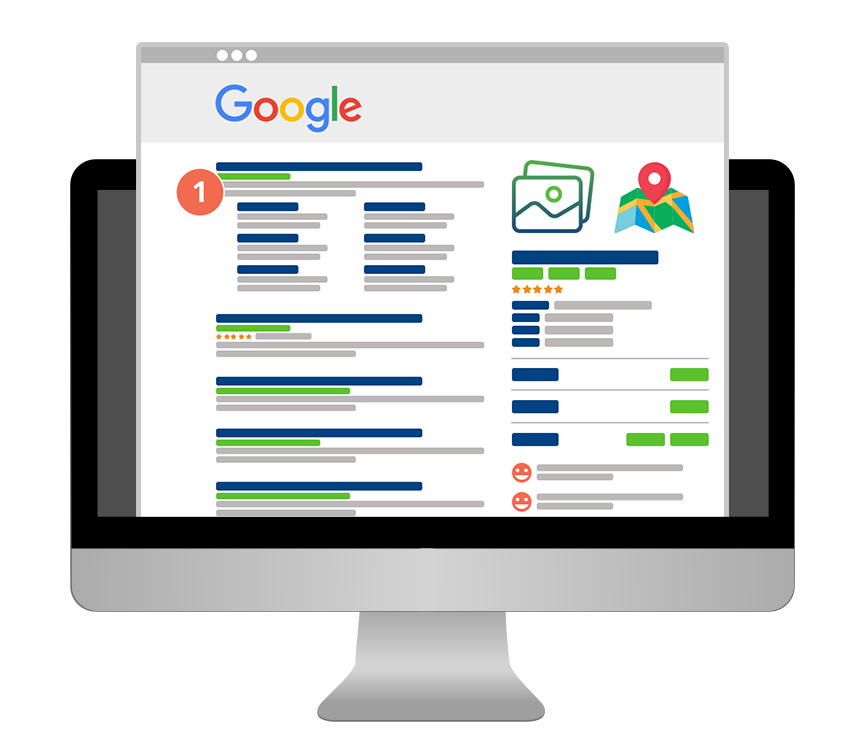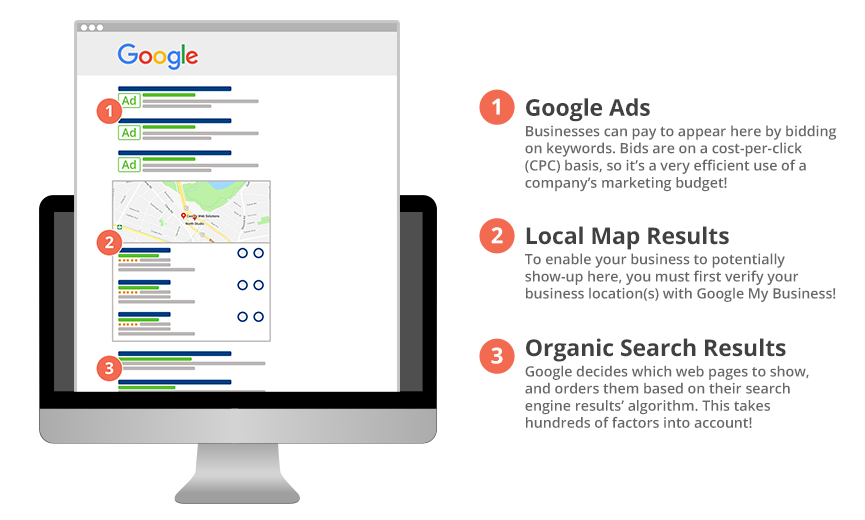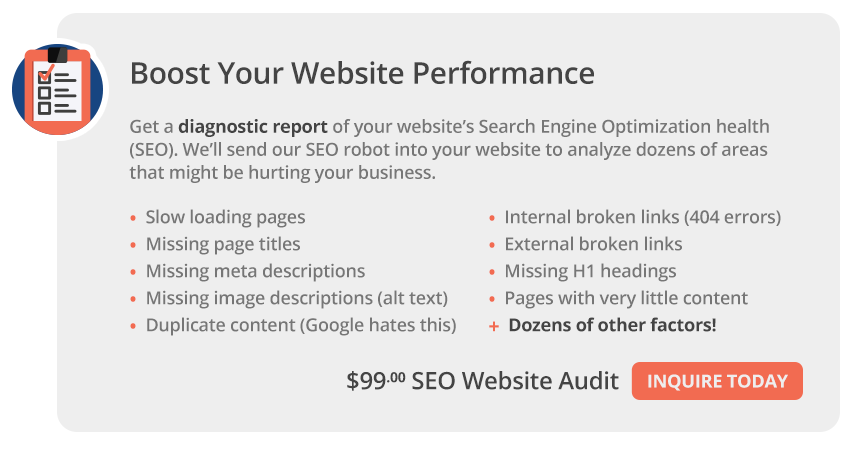
The Internet is used for many things, but much of our online activities start with a web search. Because of this, Google (who are we kidding, everyone uses Google, right?) gets millions of queries every day, and this has become big business. Web savvy organizations are using Google to win your attention in two ways;
- Via search engine optimization (SEO). Your website ends up in the positions commonly referred to as the Organic Listings.
- Via search engine marketing (SEM). Using Google Ads, your website appears at the very top of the results page, above the organic listings. This is the pay to play model and once you stop paying, your website (Google Ads) disappear.
Both of these search strategies have their pros and cons (as we explain further below), so please read on to understand these differences better. Generally, we recommend a sound and strategic approach using both SEO and SEM to draw traffic from both locations.
How Search Engine Results Pages (SERPs) are Structured
A search engine results page (SERP), may look different depending what you are searching. If you’re searching a specific brand, Google may choose to focus showing results based on the company website, and related brand pages such as their Facebook page, Google My Business listing, locations, etc. However, if you’re searching for something more general, then the results will look much different with Google Ads search ads at the top, nothing along the right of the page, and possibly no location map section. See below for an example that may give you a better idea what we mean.
Standard SERP Example:

Competing For Visibility In Search:
As you can see from above, search is a constant battle for positioning. Businesses want to win eyeballs, traffic and business when potential customers are searching online. They need their website to show-up first when these potential customers in their market are searching for keywords related to their products or services.
Organic Competition:
Having a website rank “organically” in search engines means getting your site as close to Page 1 and Position 1 as possible, (AFTER the ads and map results). If you can get your website to show-up ‘organically’ on Page 1 and Position 1, you will certainly get a big chunk of those searchers’ attention, traffic, and hopefully their business. According to a study done by Chitika Insights, the 1st organic position in a search will usually get 33% of the traffic, where the 2nd position will see approx. 18%, and so on, with the amount of traffic decreasing substantially the lower you go. That is why businesses have begun investing into learning about Google’s organic search algorithm (and their constant updates), as well as begun investing into optimizing their website(s) in order to have the best chance to rank high as well.
How to Stay Ahead of the SEO Curve
There are many factors that go into SEO, hundreds in fact! On top of that, websites are changing their content, adding and removing pages and even redesigning the look and feel. That is why it is important to constantly ‘health check’ your website. SEO Audits will allow you to stay aware of any issues your site may be encountering, and highlight any possible opportunities for improvements. We usually recommend clients get a website audit and look to work on issue improvements every month, or at least once a quarter.
Google Ads Competition
Although the Google Ads positions are technically ‘first’ – many consumers today are well aware of ads, so many tend to skip ads completely to go straight to the organic results. With that said, there is still a percentage of the population who will click these ads regardless, especially if they’re really well built. So, these ads still get a portion of traffic. Also, some could even say that users who click on these ads are more in a rush to complete a sale too. On top of that, the Google Ads search fee system is very efficient for businesses because you only pay per click (PPC). The way it works is that businesses will bid on how much they are willing to pay for a single click on their ad (resulting in a website visitor, or phone call), and this is done for specific keywords or combination of. Because your business only actually pays when there is a click, you are pretty much getting free branding as well!
Of course, the Google Ads network is vastly more complicated than we’re letting on here. Factors such as which keywords to bid on, conversion tracking, and more all go into an efficient and effective Google (search) Ads campaign. We’d be happy to take a moment to determine whether Google Ads would be a good fit for your business.
The Bottom Line on SEO vs. SEM:
It’s obvious that search engines play a huge role in how consumers interact with websites. Competing in the search engine arena can be done in a number of ways, but two main ways is through SEO and/or Google (search) Ads. Both options have their pros and cons, so it’s hard to say which one is “best” per se. We here at Caorda we usually recommend businesses be active in both SEO and Google Ads (SEM) in order to maximize the potential for search visibility. Google Ads is extremely efficient advertising, so some marketing budget should definitely be allocated strategically into that space. However, because SEO can have such a powerful effect on a company’s business for the long-term, it should never be forgotten either.
